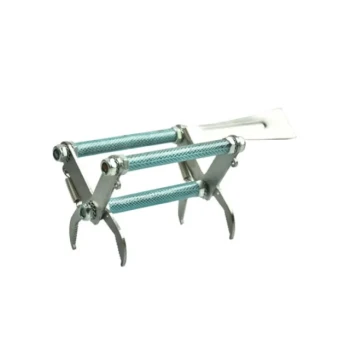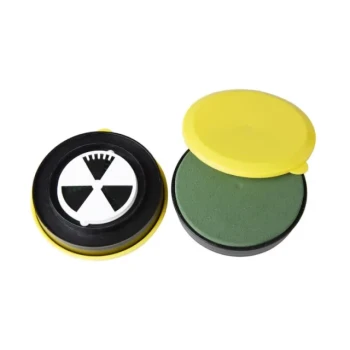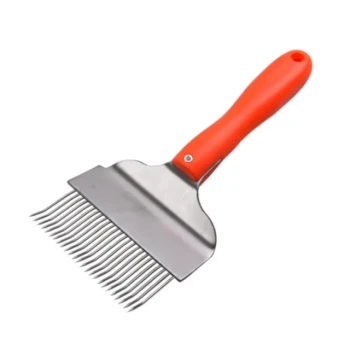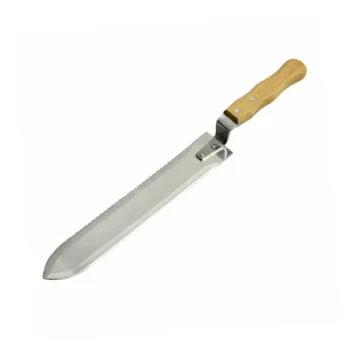In the right context, smoke is a beekeeper's most effective tool for calming a hive. However, the type of smoke and the amount used are critical. Cool, white smoke effectively calms honey bees, but hot, dark smoke—or simply using too much smoke—will have the opposite effect and can make them significantly more aggressive.
Smoke does not sedate bees; it works by disrupting their primary method of communication. Understanding this distinction is the key to using it as a tool for calm rather than a trigger for aggression.
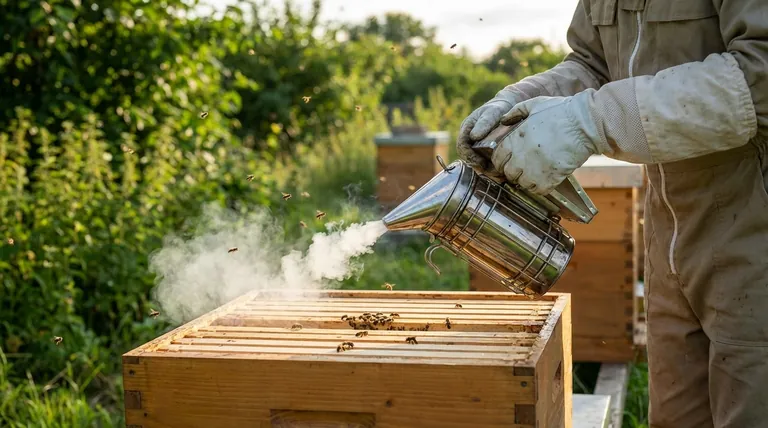
How Smoke Actually Works on Honey Bees
To use smoke effectively, you must first understand what it’s doing to the colony's social structure. Its primary effects are to interrupt communication and create a powerful distraction.
Interrupting the Alarm System
Honey bees use chemical signals called alarm pheromones to communicate danger. When a bee feels threatened or stings, it releases these pheromones to alert its sisters, who then join in a coordinated defensive attack.
Smoke effectively masks these pheromones. It scrambles the signal, preventing the alarm from spreading throughout the hive. This stops a single bee's defensive action from turning into a mass attack, slowing the colony's overall defense response.
Creating a Distraction
The presence of smoke also serves as a powerful distraction. It causes the bees to move away from the source in an agitated or excited manner, focusing their attention on the smoke itself rather than on the beekeeper. This distraction makes them less organized and less agile in their attempts to defend the hive.
The Critical Difference: Calming vs. Agitating Smoke
The outcome of using a smoker—calm or aggression—depends entirely on the quality of the smoke you produce. Bees are highly sensitive to these differences.
Cool, White Smoke: The Calming Signal
Cool, white smoke is the beekeeper's goal. It is produced by burning clean, dry, natural fuels like untreated burlap, pine needles, or cotton. This type of smoke is gentle and effectively masks pheromones without being perceived as a direct, burning threat to the hive.
Hot, Dark Smoke: The Aggravating Signal
Hot, dark smoke is a sign of incomplete or improper combustion, often from using damp fuel or synthetic materials. Bees perceive this thick, acrid smoke as an immediate danger. Instead of merely distracting them, it triggers a more intense and aggressive defensive response.
Understanding the Trade-offs: The Risk of Overuse
With smoke, precision is far more valuable than power. Using too much can quickly turn a calm inspection into a chaotic one.
Why "More" Is Not "Better"
Applying excessive amounts of smoke, even if it's cool and white, will agitate the colony. A few gentle puffs are meant to distract and disrupt communication. A large cloud, however, is perceived as a significant threat that can overwhelm the bees and provoke them.
The Goal is Disruption, Not Domination
The purpose of smoke is not to incapacitate the bees but to create a brief window of miscommunication. Your aim is a subtle interruption, not a full-blown assault on their senses. Think of it as temporarily turning down the volume on their alarm system, not blowing out the speakers.
Applying This to Your Hive
Your technique directly determines whether smoke is a calming tool or an agitator. Base your approach on the specific goal for your hive.
- If your primary focus is a calm hive inspection: Use minimal puffs of cool, white smoke at the entrance and just under the cover, waiting a minute before opening the hive fully.
- If your primary focus is avoiding bee aggression: Ensure your smoker fuel is completely dry and natural to prevent producing the hot, dark smoke that agitates them.
- If your primary focus is maintaining control during an inspection: Apply small, gentle puffs as needed if the bees begin to get agitated again, directing the smoke away from your face and toward the frames you are working on.
Used with precision, smoke is your most valuable tool for fostering a calm and cooperative hive.
Summary Table:
| Smoke Type | Effect on Bees | Key Characteristic |
|---|---|---|
| Cool, White Smoke | Calming | Masks alarm pheromones, creates a distraction. |
| Hot, Dark Smoke | Aggressive | Triggers a defensive response, perceived as a direct threat. |
Achieve a Calm and Productive Apiary with the Right Equipment
Mastering hive inspection starts with reliable, professional-grade tools. At HONESTBEE, we supply commercial apiaries and beekeeping equipment distributors with the high-quality smokers and fuels needed to produce the correct, calming smoke for effective hive management.
Ensure every inspection is safe and controlled. Contact our team today to discuss your wholesale supply needs and discover how our equipment supports successful, large-scale beekeeping operations.
Visual Guide
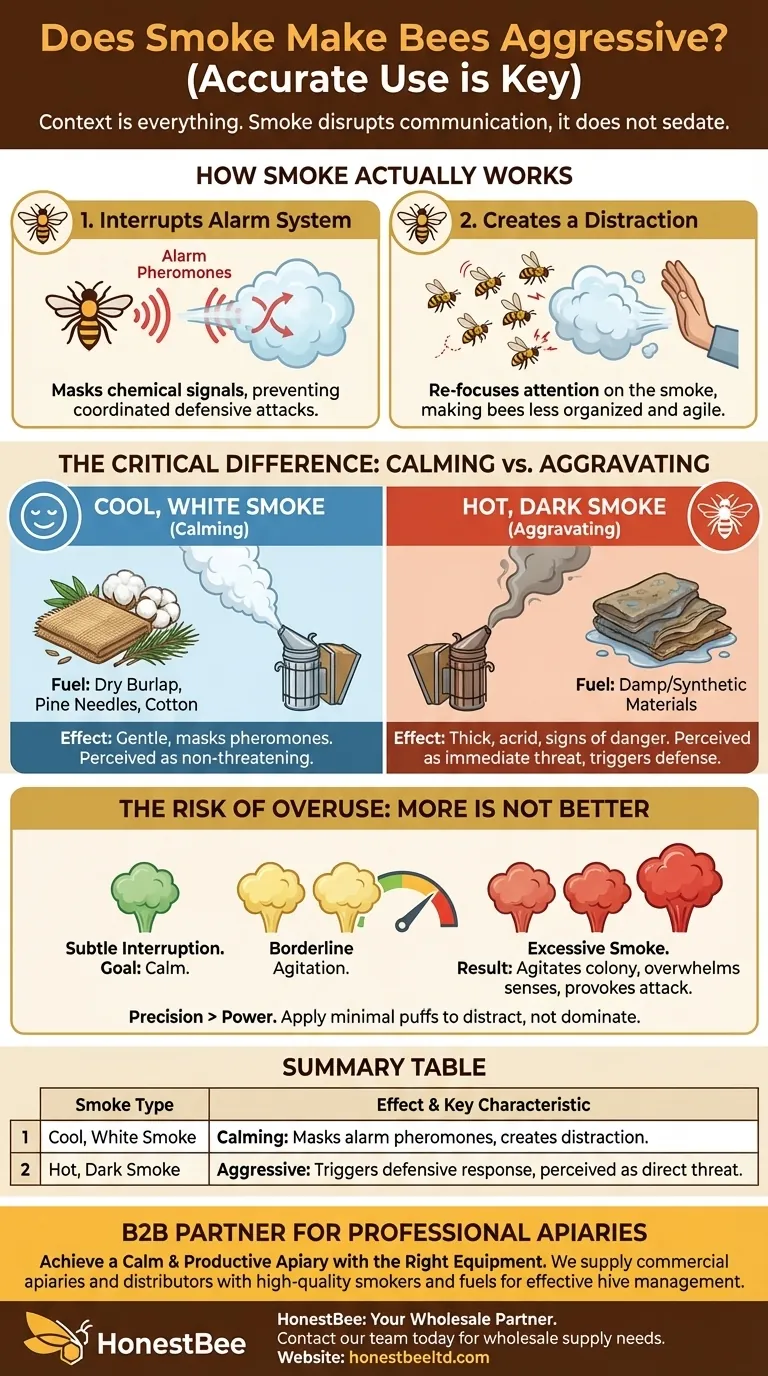
Related Products
- HONESTBEE Advanced Ergonomic Stainless Steel Hive Tool for Beekeeping
- Professional Dual-End Stainless Steel Hive Tool for Beekeeping
- Professional 3-Bar Frame Grip with Integrated Hive Tool
- Yellow Plastic Bucket Pail Perch for Beekeeping
- Professional Pneumatic Wire Embedder for Beehive Frames
People Also Ask
- What is the hole in a hive tool for? A Multi-Tool for Apiary Repairs and Maintenance
- What are the features of a regular hive tool? The Essential Multi-Tool for Every Beekeeper
- What tools are used for cleaning frames? A Beekeeper's Simple 4-Tool Guide
- Why is it important to compare the progress of different hives? A Beekeeper's Key Diagnostic Tool
- What is a hive tool and what are its uses? Master Your Hive Inspections with the Essential Beekeeper's Tool


